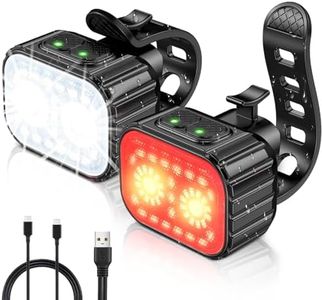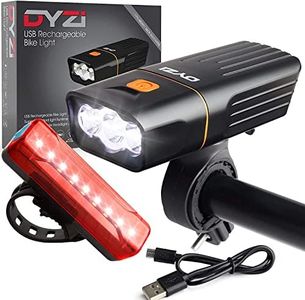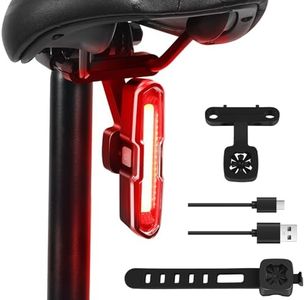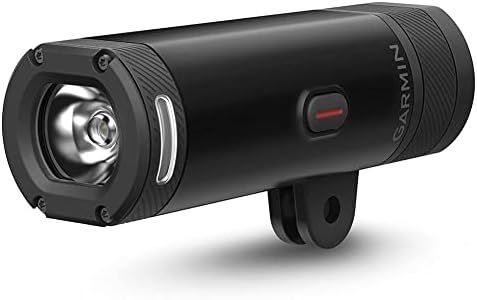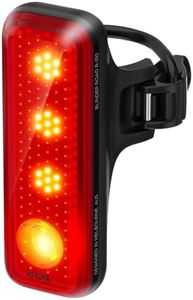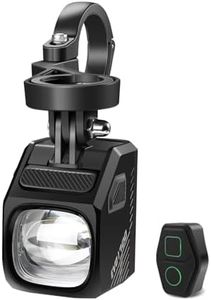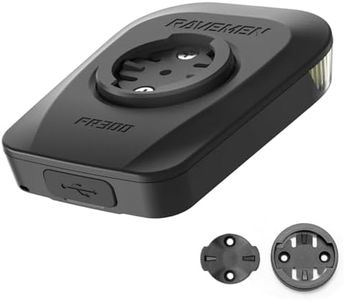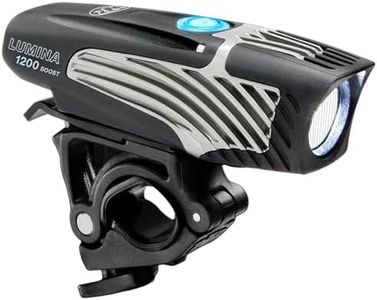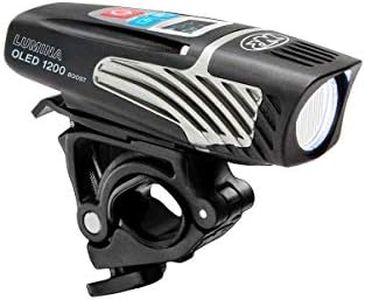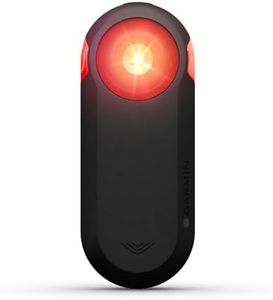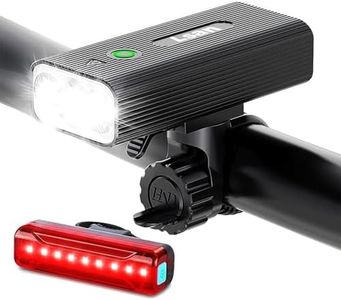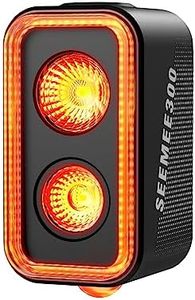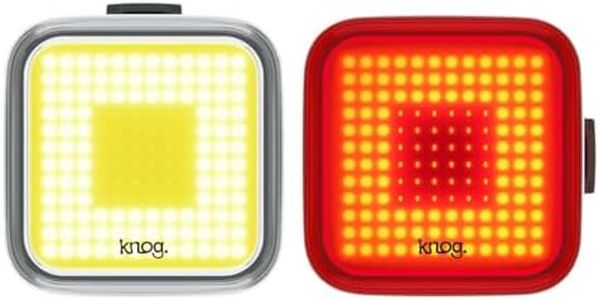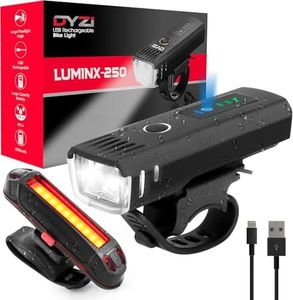We Use CookiesWe use cookies to enhance the security, performance,
functionality and for analytical and promotional activities. By continuing to browse this site you
are agreeing to our privacy policy
10 Best Bicycle Light
From leading brands and best sellers available on the web.Buying Guide for the Best Bicycle Light
Picking the right bicycle light is important for both your personal safety and your comfort while riding. Lights help you to see and to be seen by others, especially during night rides or in poor visibility conditions. To choose the best light for your needs, it's important to understand key specifications and how they relate to your specific riding habits, such as whether you commute daily, ride trails, or just take occasional rides in the evening.Brightness (Lumens)Brightness for bicycle lights is measured in lumens, which indicates how much light the device emits. A higher lumens number means a brighter light. For city riding with streetlights, a light between 100 and 300 lumens is usually sufficient to be seen by drivers and pedestrians. For riding on poorly lit roads or trails, you might need a light ranging from 400 to over 1000 lumens so you can clearly see your path. Consider when and where you ride the most often: if you only need to make yourself visible, go for lower lumens; if you need to light up dark roads, opt for higher lumens.
Beam PatternBeam pattern describes the shape and spread of the light beam. A wide, diffused beam lights up a broader area, which is great for urban or group riding where peripheral vision matters. A focused, narrow beam throws light farther ahead, which is better for spotting obstacles on dark country roads. Choose a beam pattern that matches your environment: wide for close visibility, narrow for long-range vision.
Battery LifeBattery life is how long the light can operate before needing a recharge or battery replacement. This can range from 1 to over 10 hours, usually depending on brightness settings. Shorter rides or city commutes may only require a light with a few hours of operation, while long-distance or night rides will benefit from extended battery life. Think about your usual ride duration and remember to consider if you’ll always have access to charging or spare batteries.
Mounting SystemThe mounting system refers to how the light attaches to your bike. Some mounts are quick-release, making it easy to take the light off when you park, while others are more permanent. The right mount depends on how often you need to remove the light, your handlebar size, and whether you want to transfer it between bikes. Make sure the mount is sturdy and compatible with your bike’s specifications.
Water ResistanceWater resistance means how well your bike light can withstand rain or splashes. This is usually rated by IP codes (like IPX4 or IPX6). A higher rating means more resistance to rain and dust, which is crucial if you ride in different weather conditions. If you live in a rainy area or plan to ride year-round, prioritize a well-rated water-resistant light.
Light ModesLight modes refer to the different settings on the light, such as steady, flashing, or varying levels of brightness. More modes can mean more flexibility: flashing modes can improve visibility to others, while lower settings can help conserve battery. Consider how much customization you want—if you ride in different conditions, a light with more options might suit you best.
Size and WeightThe size and weight of a bicycle light affect how easy it is to carry and how it fits on your bike. Smaller, lighter lights are less obtrusive and better for commuters or those who want to quickly remove and pocket the light. Larger lights usually have stronger batteries or are brighter but may be bulkier. Match the size to your priorities: portability or power.
